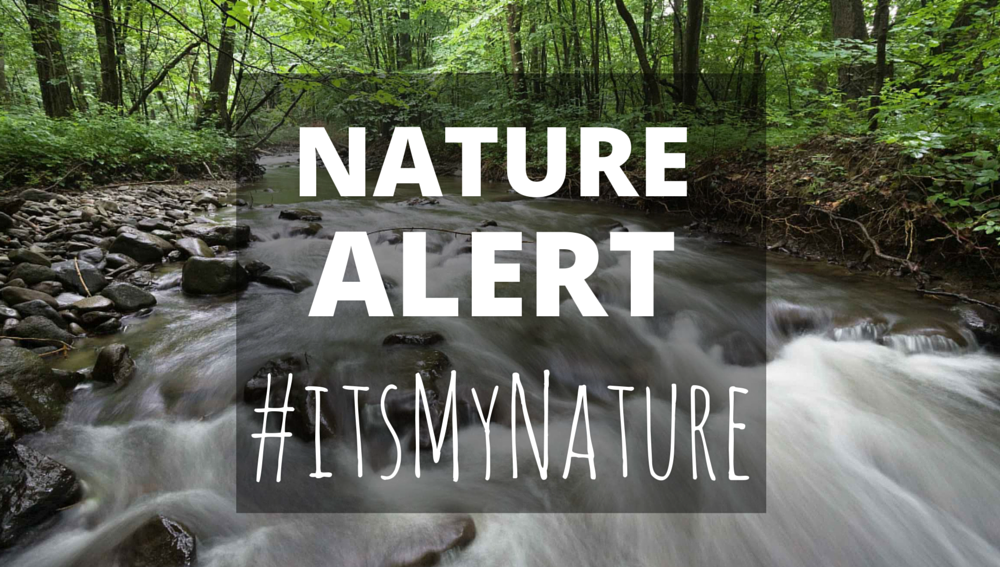 For the past three months the European Commission has held a public consultation as part of the ‘fitness check’ for EU nature legislation (Birds Directive, Habitats Directive — BHD). the BHD and related Natura 2000 network are a unique tool of environmental policy that has gained enormous importance for the protection of species and habitats throughout Europe!
For the past three months the European Commission has held a public consultation as part of the ‘fitness check’ for EU nature legislation (Birds Directive, Habitats Directive — BHD). the BHD and related Natura 2000 network are a unique tool of environmental policy that has gained enormous importance for the protection of species and habitats throughout Europe!
That is why I personally (and for my institute) responded to the online consultation, despite the fact that I was not very happy with the merely multiple choice questions (that are indeed quite specific). Unfortunately there is only little room for comments (but there is!). Now, as the last three days of the consultation are on, I am highly encouraging you to have your say on this. You can do that either directly on the website of the European Commission (that requires some thinking to go through, note that there is a shorter 14 question version for the general public available and an extended version for experts you are asked to answer or not after filling in the first questions) or you can use the “Nature alert” platform that has been established by a union of several big nature conservation NGOs in Europe. This is a great initiative where you can defend the BHD and our natural environment in a simple and convincing way (like the almost half a million signatories so far!).
Which way you choose — can’t say this too often — please get active and have your say now! (consultation closes July 24, 2015)
Last but not least this is also very relevant for the field of impact mitigation and compensation, in particular with regard to Art. 6 of the Habitats Directive which requires appropriate assessment of impacts and related compensation measures!
Find some more technical information on the consultation pasted below as well as my comment that I have included in my participation.
Objective of the consultation
This consultation is designed to gather opinions on current EU nature conservation legislation (the Birds Directive and the Habitats Directive) and its implementation to date, as part of the ‘fitness check’ that the European Commission is carrying out under its Regulatory Fitness and Performance Programme (REFIT).
The fitness check looks at whether the current regulatory framework is proportionate and fit for purpose, and delivering as expected. Specifically, it assesses the relevance, effectiveness, efficiency, coherence and EU added value of the legislation. However, the fitness check does not consider possible future changes to the legislation. If required, this would be done in a separate impact assessment.
Details of the fitness check timetable and process
The results of this consultation will be assessed and summarised in a report, which will be made publicly available on the fitness check website. You are invited to read the privacy statement attached to this consultation for information on how your personal data and contribution will be dealt with.
Birds Directive & Habitats Directive – strategic objectives
Adopted in 1979, the Birds Directive is designed to protect all wild birds and their most important habitats across the EU. Its strategic objective is ‘to maintain the population of all species of wild birds in the EU at a level which corresponds to ecological, scientific and cultural requirements, while taking account of economic and recreational requirements, or to adapt the population of these species to that level’.
The Habitats Directive, adopted in 1992, introduces similar measures for some 230 habitat types and 1 000 species of wild animals and plants — collectively referred to as ‘species of EU interest’. Its strategic objective is ‘to maintain or restore natural habitats and species of EU interest at favourable conservation status, taking into account economic, social and cultural requirements and regional and local characteristics’.
How the Birds and Habitats Directives protect nature
The Directives require all EU countries to:
-
set up a strict protection regime for all wild European bird species and other endangered species listed in Annex IV to the Habitats Directive.
-
designate core sites for the protection of species and habitat types listed in Annexes I and II to the Habitats Directive and Annex I to the Birds Directive as well as migratory birds.
Together, these designated sites form part of a network of areas for nature — the European Natura 2000 Network. This consists of some 27 000 protected areas of high biodiversity value covering about 18% of the EU and over 4% of its seas.
Natura 2000 sites are selected on purely scientific grounds. Each EU country then decides which measures are needed to ensure appropriate protection based on the needs of the species and habitats, taking into account economic, social and cultural requirements and any regional and local characteristics.
To check whether the Directives are achieving their aims, EU countries monitor progress and report back to the European Commission every 6 years on the status of the species and habitats of EU interest that are present in their territory. The Commission then brings together this information to determine:
- the overall EU-wide trend for each species and habitat
- whether they have reached a favourable conservation status, or are on the way to it.
Structure of the questionnaire
You are invited to fill in the online questionnaire, which is available below. Please note that it is available in all EU languages.
There are two parts to the questionnaire. The first part is designed for the general public and does not require extensive knowledge or experience of the Directives. The questions relate to issues of effectiveness, efficiency, relevance, coherence and EU added value. The questions in the second part build on those in the first part and cover similar issues, but in more depth. They require some understanding of the Directives and their implementation.
You must answer the questions in the first part for your response to be taken into account. You will then be asked whether you wish to answer the more detailed questions in the second part of the questionnaire. If not, you can still make additional comments in a free text box before submitting your response.
You may pause at any time and continue later. Once you have submitted your answers, you can download a copy of your completed responses
Please note that due to technical requirements for processing the questionnaire, and in order to ensure a fair and transparent consultation process, only responses received through the online questionnaire will be taken into account and included in the report summarising the responses. Questionnaires sent by e-mail or in paper format will not be analysed.
My comment added to the participation in the consultation
Within a relatively small period of time the Habitats Directive and the Birds Directive (BHD) have become important policy and legal instruments for nature conservation at European and national level.
Despite implementation gaps and implementation delays at national level (e.g. in Germany), the BHD are firmly institutionalized and very effective in achieving their objectives, including
- they make an important contribution to the international, European and national conservation policies — especially the International Convention on Biological Diversity, the EU Biodiversity Action Plan and the National Biodiversity Strategy.
- they have become an important anchor point in national nature conservation practice (in the case of Germany an enormous input into national legislation under the Federal Nature Conservation Act) and have caused an expansion of the national system of protected areas.
- they take a comprehensive approach: the Natura 2000 management planning and compliance check ensure that protected areas are sustainably maintained and developed (concept of favorable conservation status) and protected against (economic, etc.) developments.
- the species protection inspection in accordance with Article 16 of the Habitats Directive has an important role in the protection of the Habitats types (individuals based approach).
- they foster cross-border cooperation in nature conservation.
The ongoing “health check” should aim at strengthening the enforcement of the policies in all Member States of the EU and a further expansion, in particular through an effective reduction of the funding and management, and increased international cooperation.

Pingback: SHORT INFO: The verdict is in: Europe’s nature laws are fit for purpose - Biodiversity Offsets Blog
Pingback: SHORT INFO: Commission ‘barking up the wrong tree’ on nature law review - Biodiversity Offsets Blog